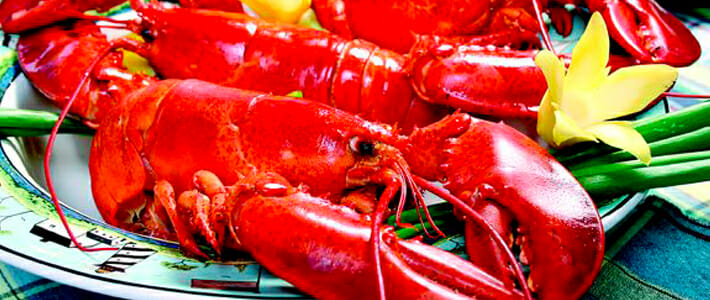Lobster, Maine
Homanus americanus

Also known as Maine lobster, this species is a crustacean with a hard-shelled body, large claws, and long antennae. This species also has jointed appendages and no backbone. American lobster is considered a delicacy and is relatively expensive due to harvesting techniques and distribution costs. Cooked meat is white with red tinges.
Product pdf for download-
3.5 oz (100g) raw, edible portion
-
Calories 110
-
Calories from Fat 0
-
Total Fat 0
-
Saturated Fat 0
-
Cholesterol 70mg
-
Sodium 0mg
-
Total Carbohydrates 5
-
Protein 18g
-
Potassium 0mg
Texture
The texture of American lobster is tender and firm-textured.
Preparation
American lobsters are best steamed, boiled, grilled or baked.
Quality Control
Not all live lobsters are perfect. Within one shipment of live lobsters, there may be “culls” (missing one claw), “bullets” or “pistols” (missing both claws), or “deads” (self-explanatory). Also, during the winter, lobsters become dormant and do not move around or eat much, and it is not uncommon to find a lobster that is almost empty of meat.
Interesting Fact
While most lobsters are greenish to reddish brown, in rare cases, bright blue lobsters have been caught. It is even more unusual to find a white, or albino lobster – but they do exist.
Alternatives
Shrimp, crab, langostinos, and crawfish can be used as substitutes for American lobster.
Source
American lobster can be found in the Western Atlantic Ocean from Canada to Maryland.
Harvest Method
American lobsters are harvested by wire or wooden traps set on the ocean floor.
Harvest Season
American lobsters can be harvested year-round with peak season being summer when the water is warm.
Flavor
This species has a delicately sweet flavor.
Market Segments
American lobsters are appropriate for casual dining, fine dining, hotels, and resort/clubs.